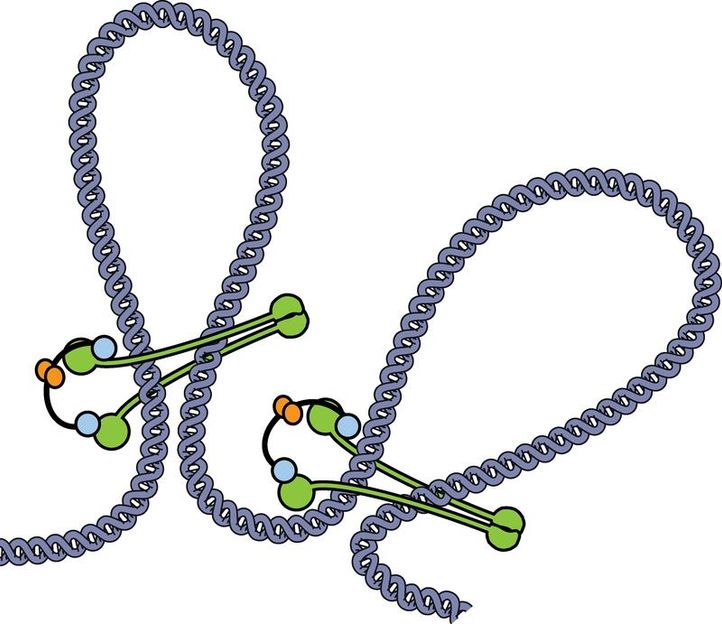What Holds Chromosomes Together
Max Planck Scientists Elucidate Operating Mode of DNA-Packaging
Advertisement
All living organisms consist of cells that have arisen from other living cells by the process of cell division. In order to ensure that the genetic material is equally and accurately distributed between the two daughter cells during cell division, the DNA fibers must remain in an orderly and closely-packed condition. At the Max Planck Institute (MPI) of Biochemistry, scientists have now elucidated how this packaging process works in bacteria. Their studies showed that the SMC protein complex holds DNA together like a clip and thus keeps the genetic material in order.

The SMC protein complex (green, blue, orange) embraces the DNA like a clip and thus, keeps the genetic material in order.
Larissa Wilhelm / Copyright: MPI of Biochemistry
In each human cell, about two meters of DNA must fit into a cell nucleus that has a diameter of only a few thousandths of a millimeter. Here, the DNA is organized in individual chromosomes. In order to ensure the DNA’s secure transport during cell division, the long and coiled DNA fibers must be tightly packed.
So far, scientists have only a sketchy understanding of this step: The SMC protein complexes play a key role in this process. They consist of two arms (SMC) and a bridge (kleisin). Together, they form a ring-like structure. “You can understand how important these protein complexes are when you look at their evolution,” explains Larissa Wilhelm, PhD student at the MPI of Biochemistry. “Structure and operating mode are quite similar in bacteria and humans.”
There are different possibilities as to how the SMC protein complex could pack up DNA. It could for example stick together the different DNA fibers. However, the Max Planck scientists were able to show in bacteria that the SMC protein arms embrace the DNA like a clip, thus enabling the connection of pieces of the DNA that lie wide apart from each other.
In a next step, the members of the research group “Chromosome Organization and Dynamics” want to find out whether the clip either opens for a short period of time in which it embraces already formed DNA loops, or whether the clip first binds to the DNA and then forms DNA loops itself by encasing the DNA. “Our results could also help to better understand the complex organization of human chromosomes and hereby allow insights into the development of genetic defects such as Trisomy 21” says Stephan Gruber, group leader at the MPI of Biochemistry.
























































